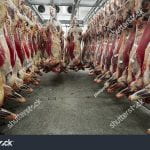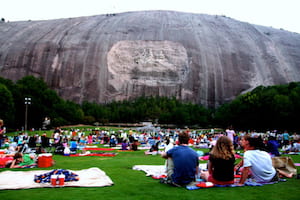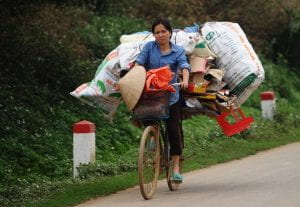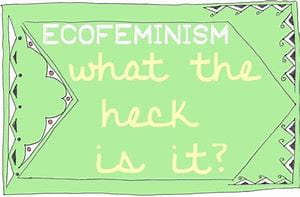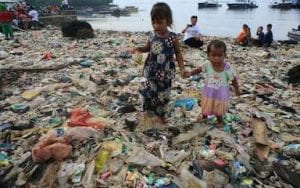WOMEN-NATURE ASSOCIATION
1.Analyze 3 images.
(a) Objectification- the ‘thin’ looking cow with the tape measure around her waist. Her youthful appearance is tied to her fertility-which is the giving of milk. A ‘fat cow’ would be rendered old and useless and would not be in this advertisement.
(b) Sexualization/Virility-the ?pub or ?restaurant named Ludacris with African American man holding the foot of a women in a red shoe-(called hooker shoe) with all of her leg and lower part of her thigh exposed, while he is attempting to eat her leg, while adding seasoning to it. Meat eating is a sign of masculinity and by extension virility for men. Women are referred to as meat in songs and some cultures.
(c) Consumed-the African-American female in the Chick-fil-a advertisement “Dress as cattle, ‘graze’ for free.” This category ‘B’ person is likely to be linked with animals and nature. She is the consumable, consumed by the white and powerful patriarchy, of which Chick-fil-a-category ‘A’ is a part of.
- Post a photo-analyze it as per Adams.
False Mass Terms. The photo.
This term Adams introduces, to bring awareness to our indifference to animals because we consume them as food.
“Domesticated animals finitude is determined by us, human beings. We know when they die, and because we demand it.” (Adams 6) they become “terminal animals” to us because their fate to be eaten lie in our power. “Animals” argue Adams, are killed because they are false mass terms, but die as individuals.” Adams goes on to explain, “they die as cows, not beef, as pigs, not pork. Each suffers his or her own death which matters to the one who is dying.” (7) Adams agrees with Gourevitch (P.202) who likens mass killing of animals to genocide. The crime states Gourevitch stems from the idea -seen as mass terms by the oppressors, that one is killing a people, not people. “When seen as a people” Gourevitch adds, “propaganda and stereotyping take over.” (6) Adams reminds us “behind every meal of meat there is an absent dead animal “absent referent” who separates the meat eater from the other animal and that animal from the end product.”(6) Because meat eating is called food, humans fail to see this as contact with animals. Meat therefore operates in our culture as a mass term which has no individuality, uniqueness, or particularity. Adams contends that if one “adds five pounds of meatballs to a plate of meatballs, it’s more of the same thing; but to kill a cow, butcher it, grind up the flesh, there is no mass term. An individual is destroyed.
We have no compassion for the animals’ situation because of the belief of false mass terms. The “massification” of beings permits the dilution and diminishment of our attention, and means, our release from empathy. (6) Transforming nonhuman subjects into nonhuman objects is the most efficient way to show that humans do not care about animals. (Adams. “War on compassion.” p. 6-7)
Slaughter house cows, hanging on hooks in the cold half, of cows.
Annotated Bibliography.
The Quaker reformer John Woolman left his home in New Jersey for England in 1772. Concerned about reports of misuse of horses pulling the “flying coaches.” (Plank) “Woolman” continued Plank, “resolved not to ride in a stage coach nor use the British postal system while in England.” Woolman’s feelings about harm to animals from commercial growth is “understood in the context of Quakerism’s millenarian tradition-animals have cosmological significance and everyone should guard the “brute creatures.” (Plank). Woolman’s anxiety intensified about mistreatment of animals during his passage to England. On board he described the ‘dunghill fowls” brought for eating, as pining, stopped crowing, and killed by breaking waves. He believed that humans should maintain “a tenderness toward all creatures …” (n 80) Woolman likened parental affection as a “branch of self-love-motivating animals to watchfully and orderly feed their helpless.” (n 68) But humans, said he, had a pernicious “natural desire of superiority.” (Plank) Woolman may have been a vegetarian like other religious thinkers then, like Benjamin Lay. The best-known vegetarian in Colonial North America. Woolman maintained “peculiar dietary restrictions, chiefly bread, milk and butter, only if obtained in a warrantable or Christian manner.” (n 54) Lay drank only milk and water and “substituted on a vegetable diet.” (n 40) He owned leather garments only made from animals who died naturally. Plank said of him, “his tender conscience would not permit him to eat any food, nor wear any garment, nor use any article procured at the expense of animal life.” (n 45)
Plank, Goeffrey. “The Flame of Life was Kindled in All Animal and Sensitive Creatures”: One Quaker Colonist’s View of Animal Life. Source. Church History; September.2007, Vol.76 Issue 3, P569-590, 22p

